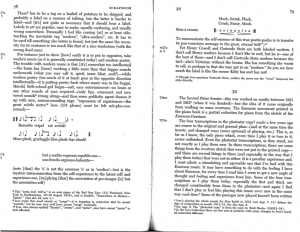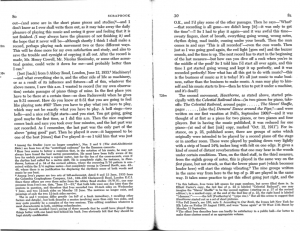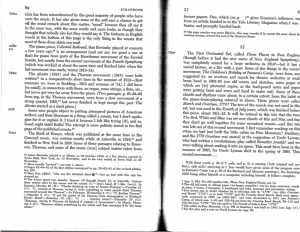When I was searching for Charles Ives correspondence in our music library, I came across a book called Charles E. Ives: Memos. It is a collection, constructed by John Kirkpatrick from Yale University, of previously unpublished loose leaf writings of Charles Ives. Some were initially handwritten by Ives himself, while others were written in shorthand by his secretary, Miss Florence Martin, and edited by him later. After his death in 1954, these loose leafs were collated and organized by when they were written, and ultimately published in this book. As with any correspondence collection, it does not include every single “memo” Ives ever wrote; it is believed this collection includes approximately three-fifths of his loose leaf writing.
The book is in three main parts: “Pretext,” “Scrapbook,” and “Memories.” While it looks as if each section is written in prose, that may not necessarily be the case. Kirkpatrick took the time to mark each piece, sometimes a paragraph or a few sentences, with identifying information revealing where those words came from. “Pretext” focuses on Ives’ aims, his views on music, critics, and criticism. “Scrapbook” reveals the composer’s notes on his own music. “Memories” provides the reader with biographical and autobiographical information.
Below, I have included the pages from “Scrapbook” of Ives’ Second Piano Sonata, since we are studying this piece in class (number 30). Ives provides insight as to how each of the four movements came to fruition. He reveals that he never really came up with an ending for the first movement, “Emerson,” or developed one way to play it. For the second movement, “Hawthorne,” Ives describes the cluster chords on page 25 of the score, how to play them and what effect they are supposed to have on the listener. In his words about the third, “The Alcotts,” and fourth movements, “Thoreau,” Ives reveals that he had intentions of expanding his orchestration to include organ, strings, woodwinds, etc. Some of the material from the fourth movement came directly out of a string quartet Ives had been working on but never finished.
These notes by the composer about his or her own pieces are eye opening, especially to the performer. They are very insightful and allow the performer to get into the mindset of the composer, and learn more about exactly what the composer meant when he or she wrote the piece.
Kirkpatrick, J., ed. Charles E. Ives: Memos. New York: W. W. Norton &, 1972.




I’m glad you wrote about this, D. Ives’s “autobiography” is a fascinating and confusing document, and you clearly got a lot out of it. If you ever work with a primary source like this again, it might be interesting to engage with a few, choice excerpts of the author’s own prose. In other words, give us an Ives quote you find particularly meaningful, then do a little analysis of what he meant and how it relates to other things we’ve talked about in class. All in all, though, nice job!